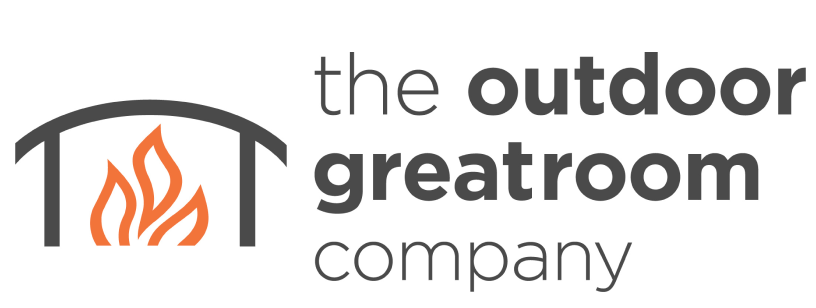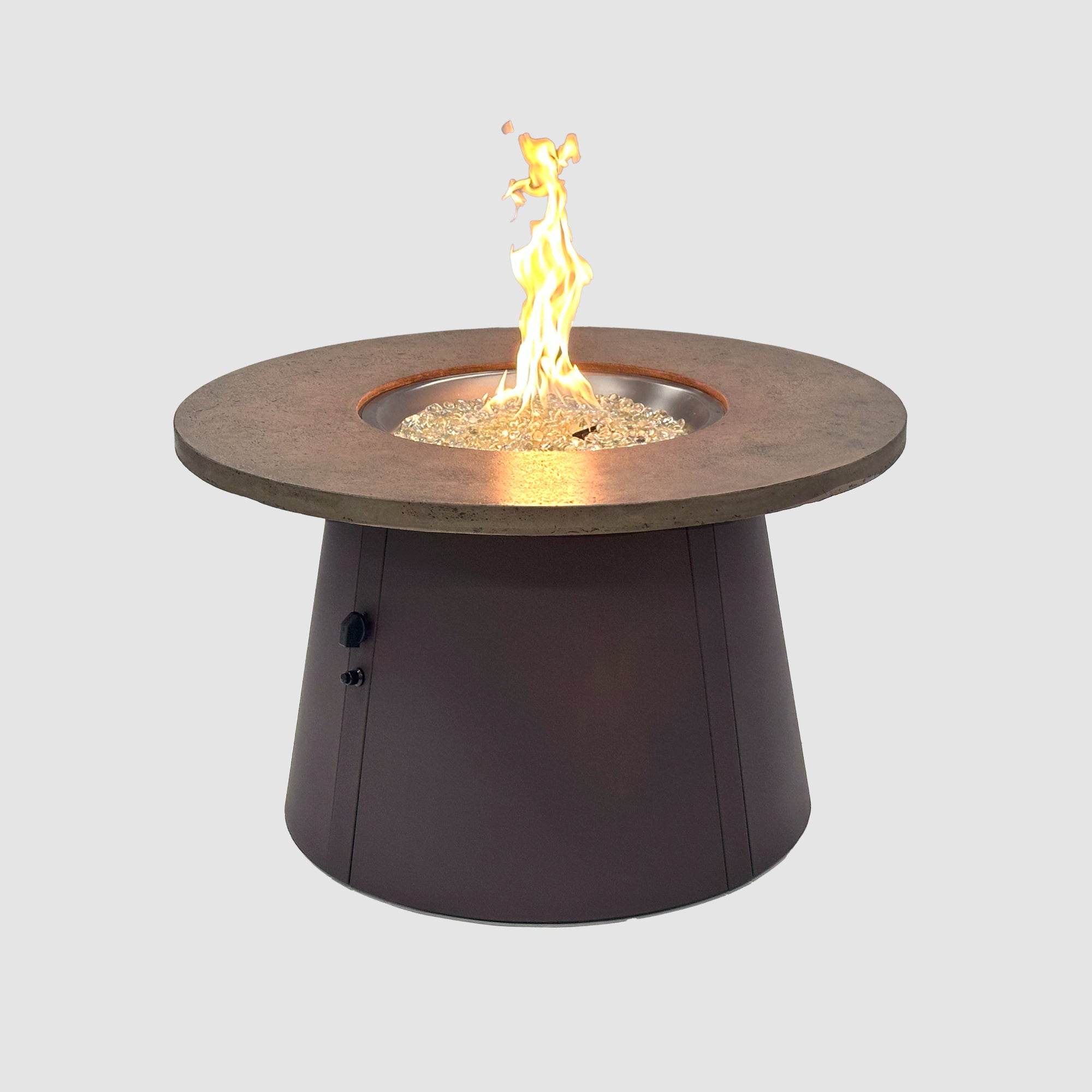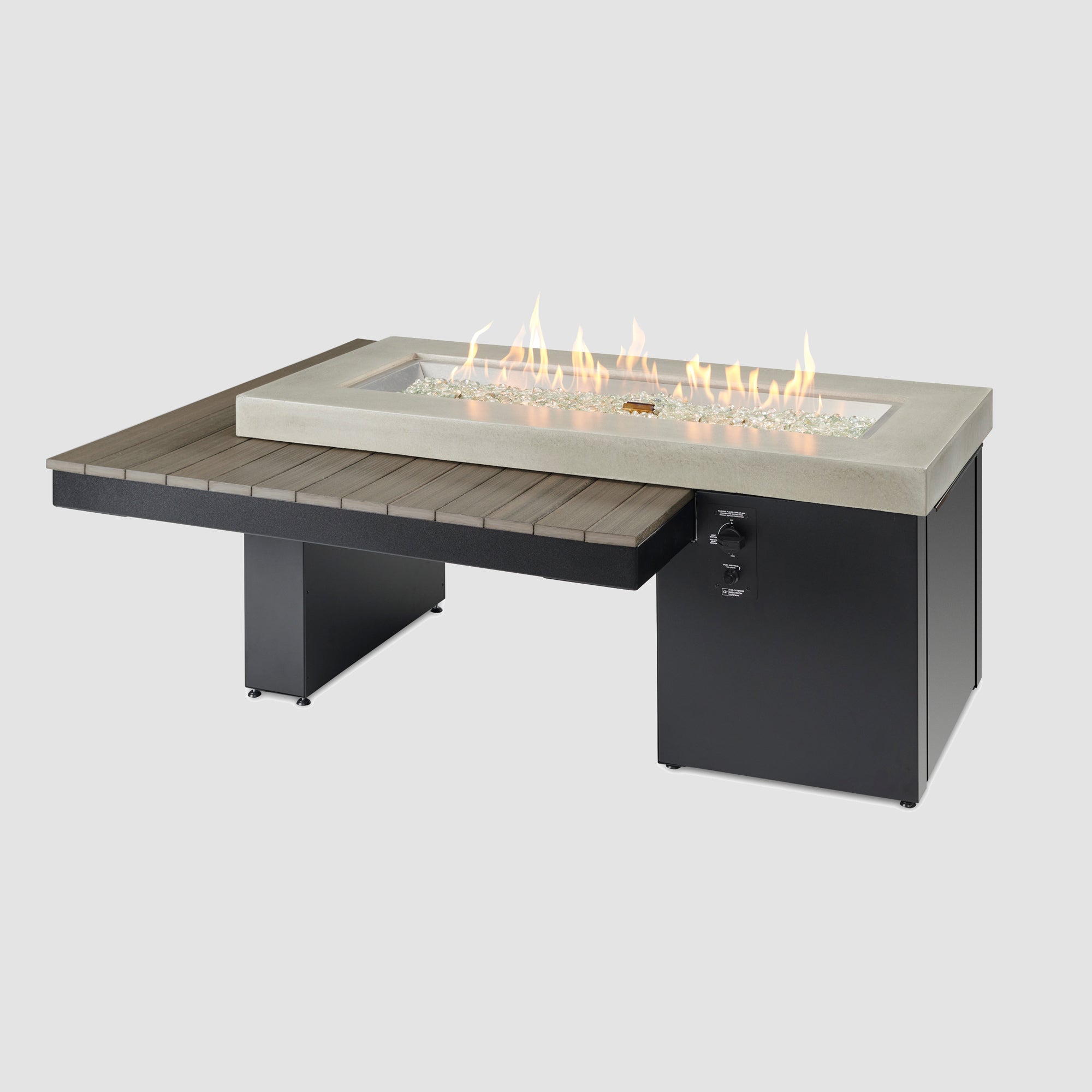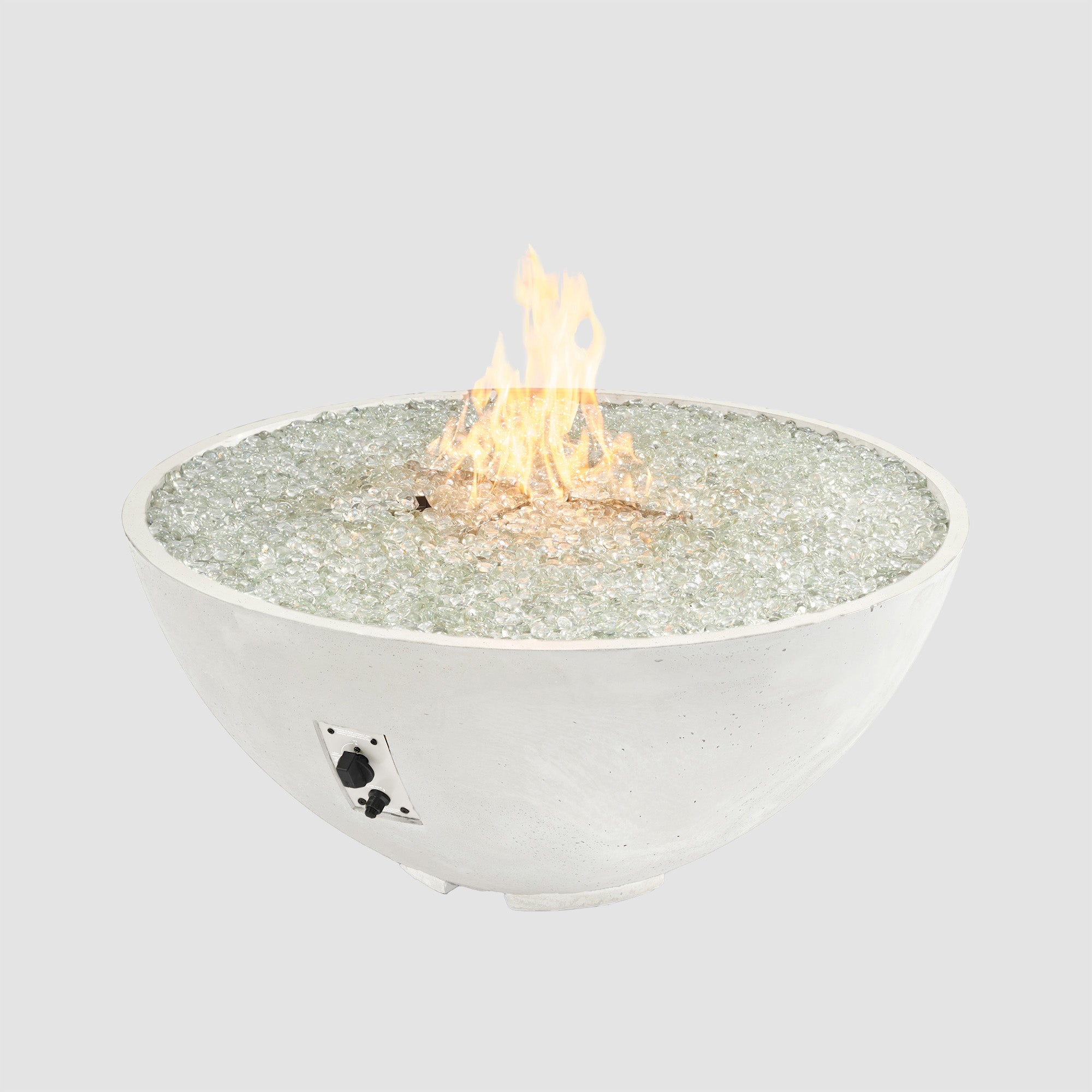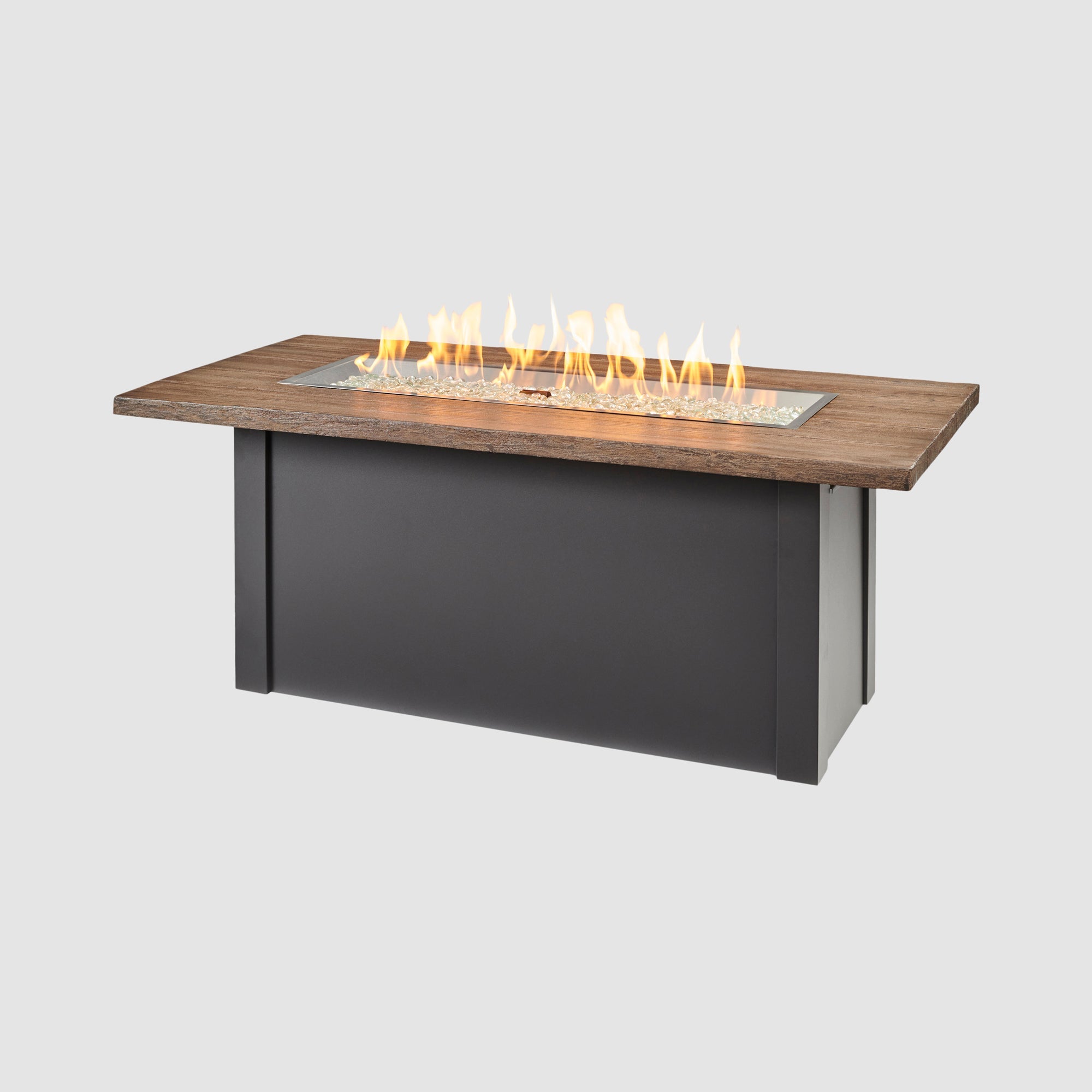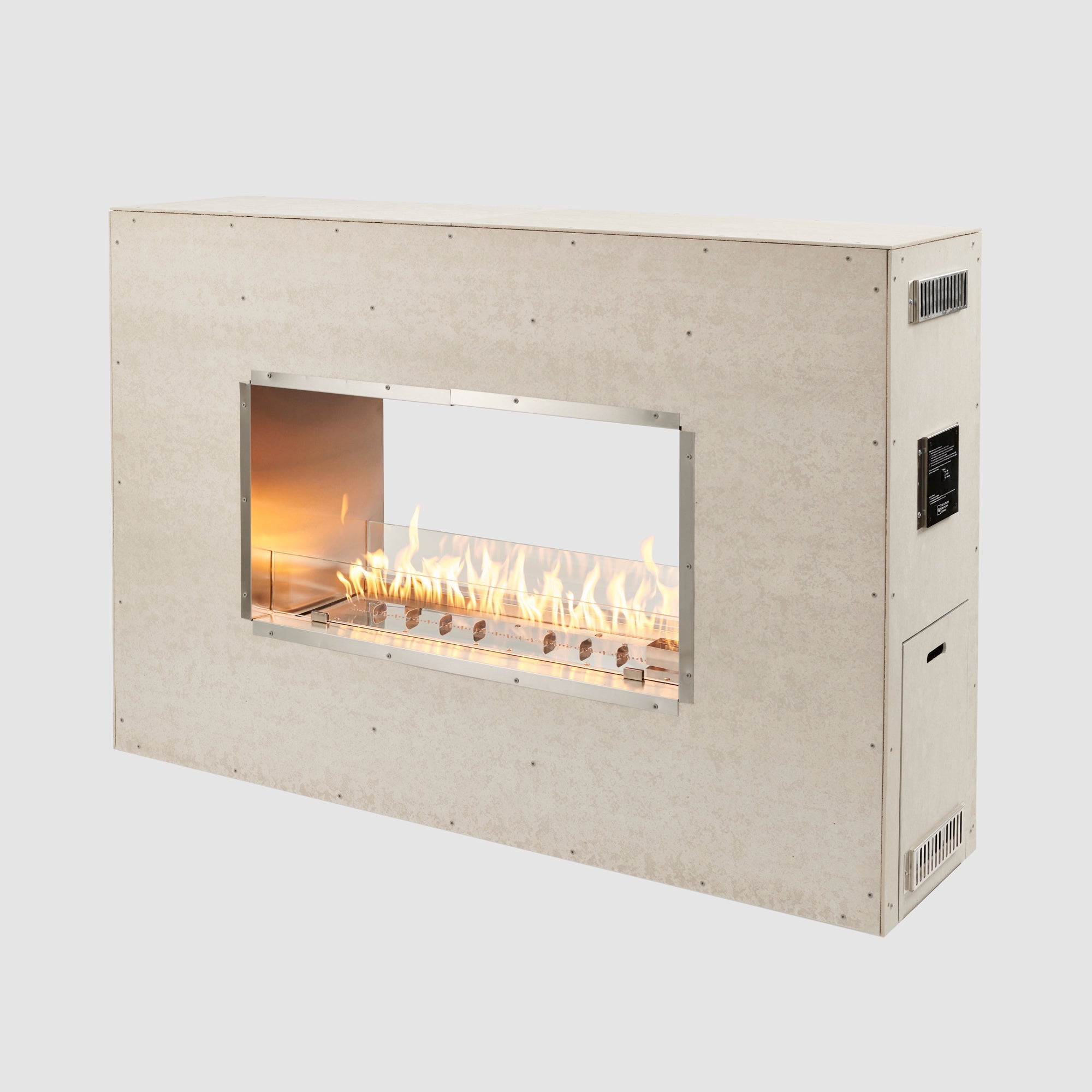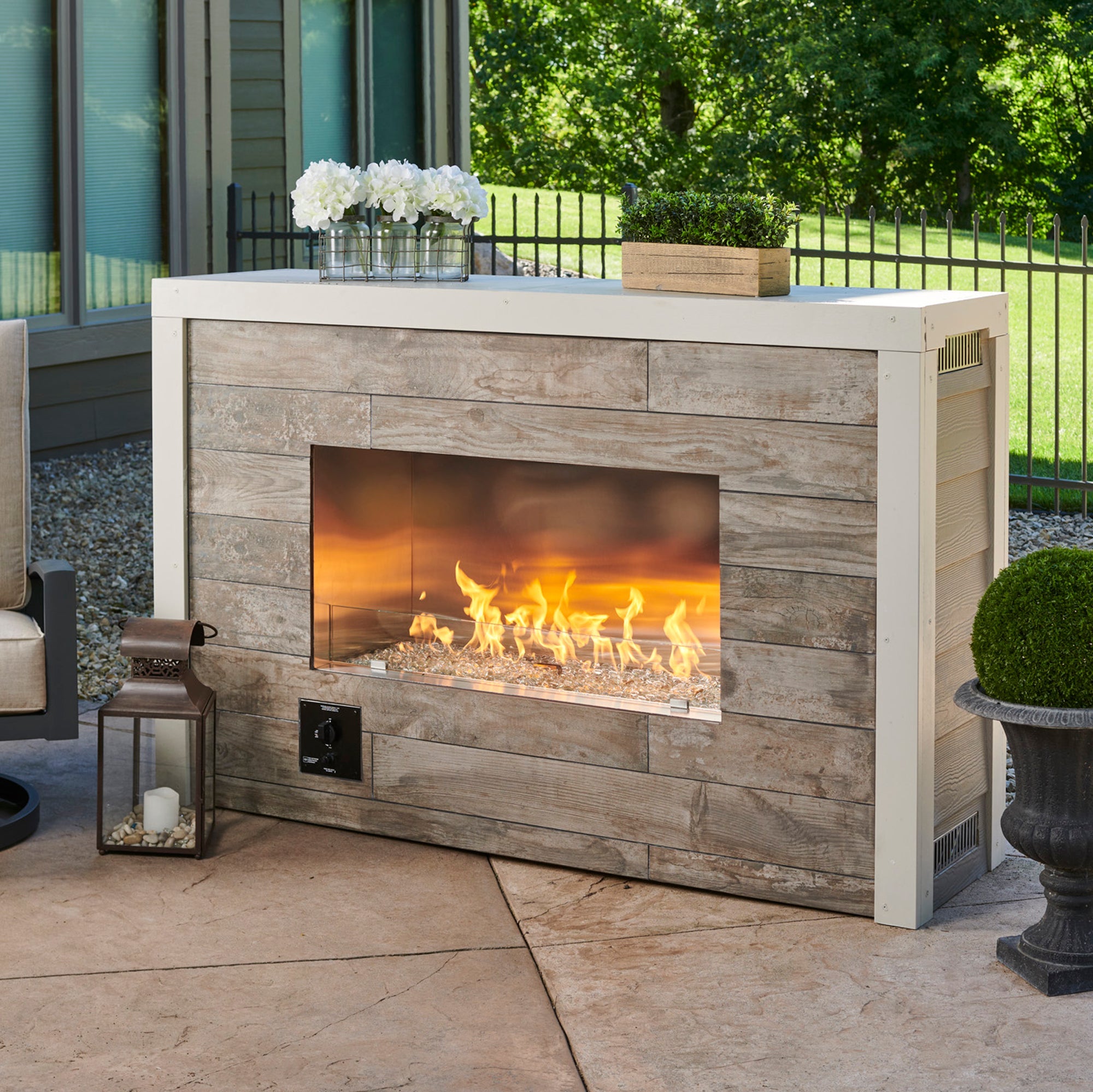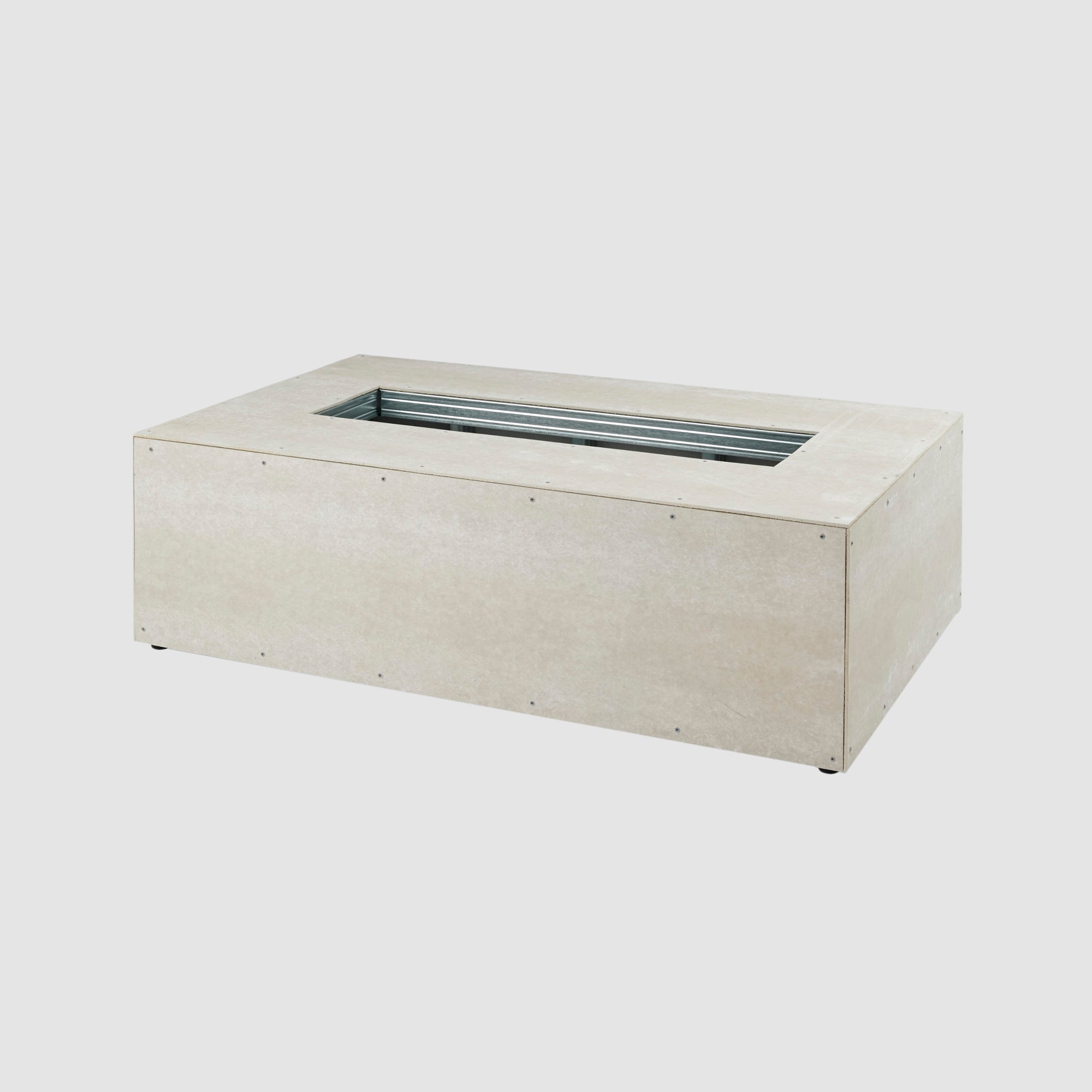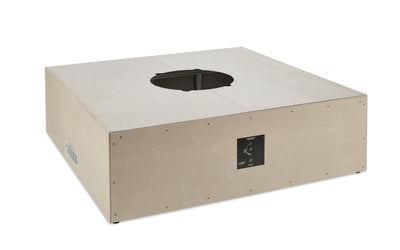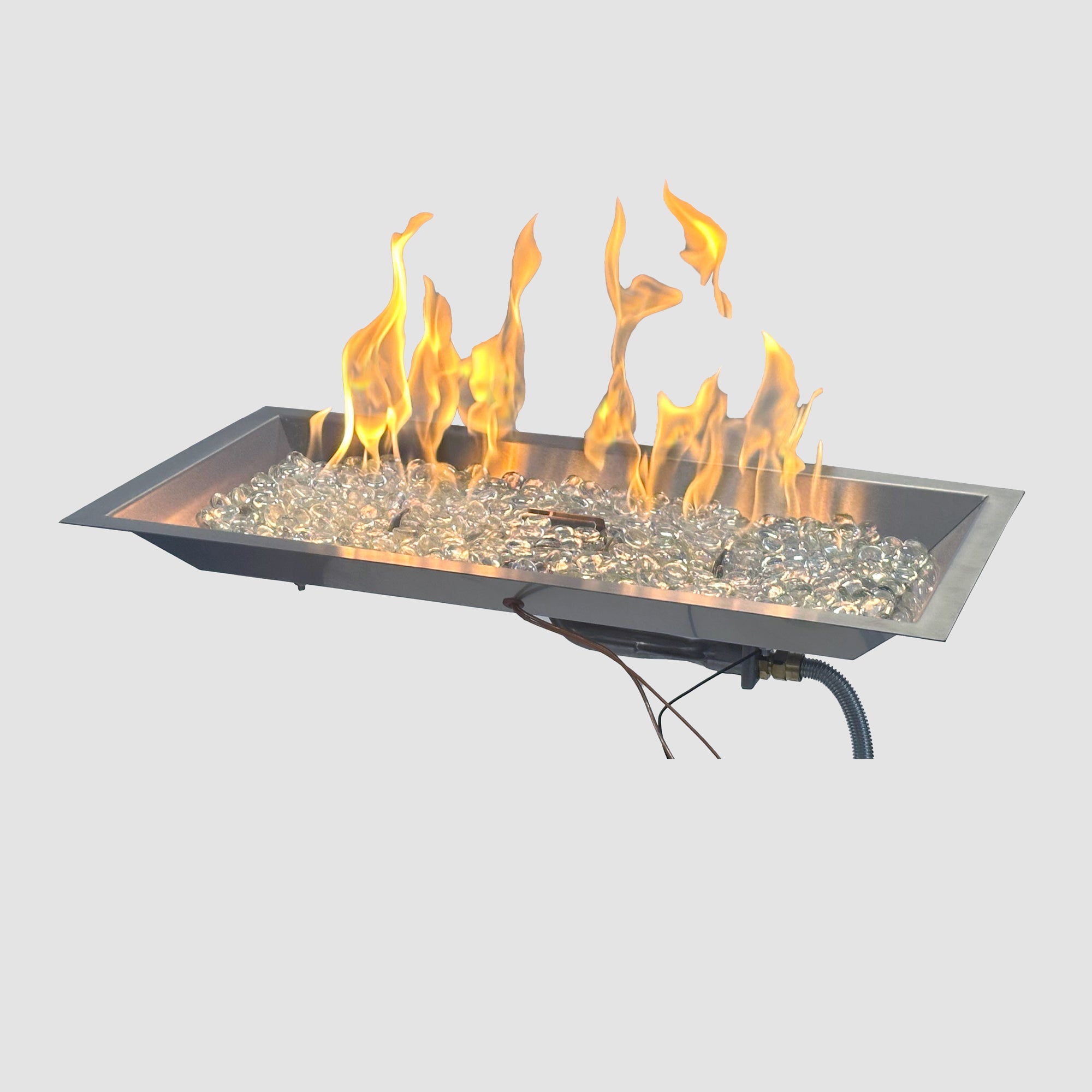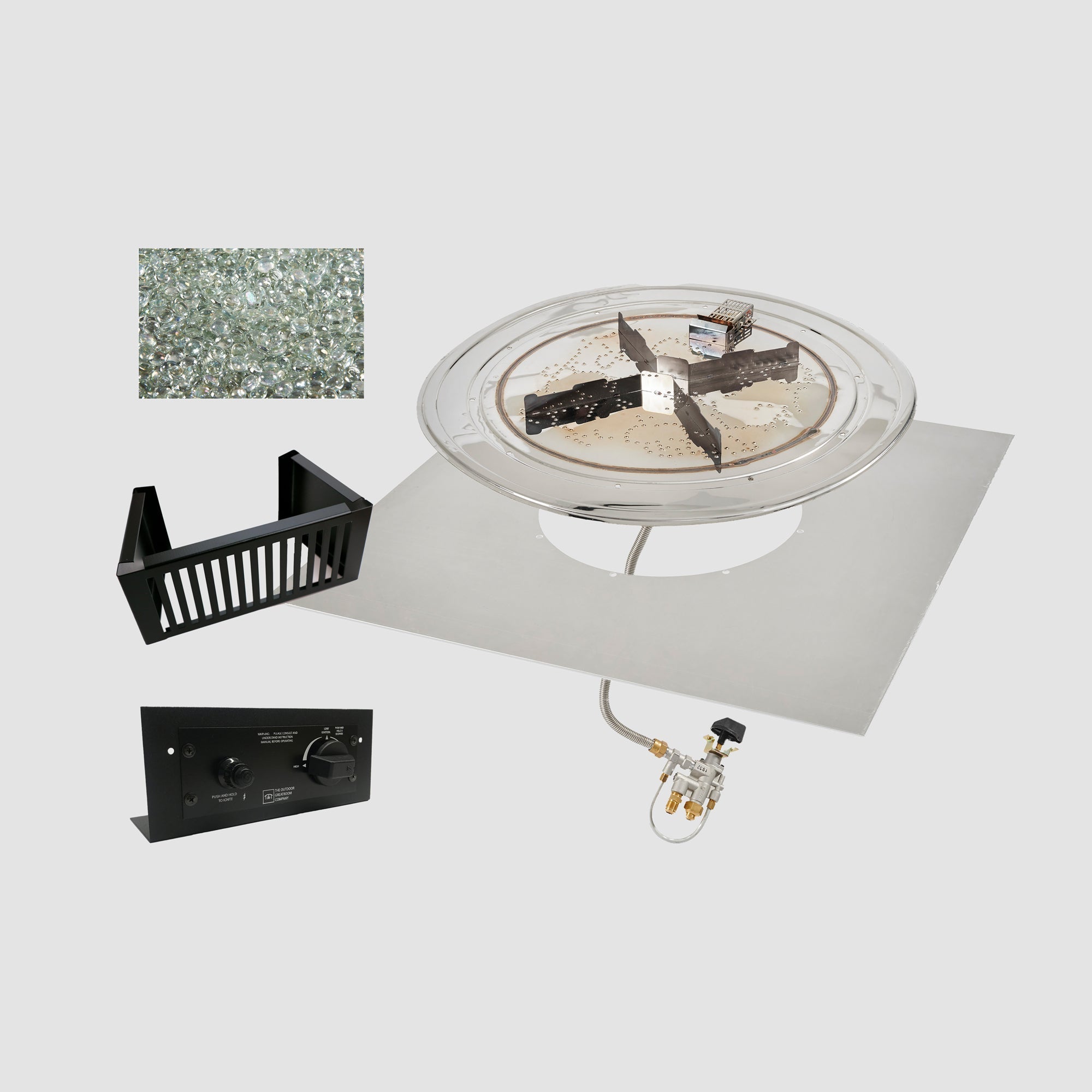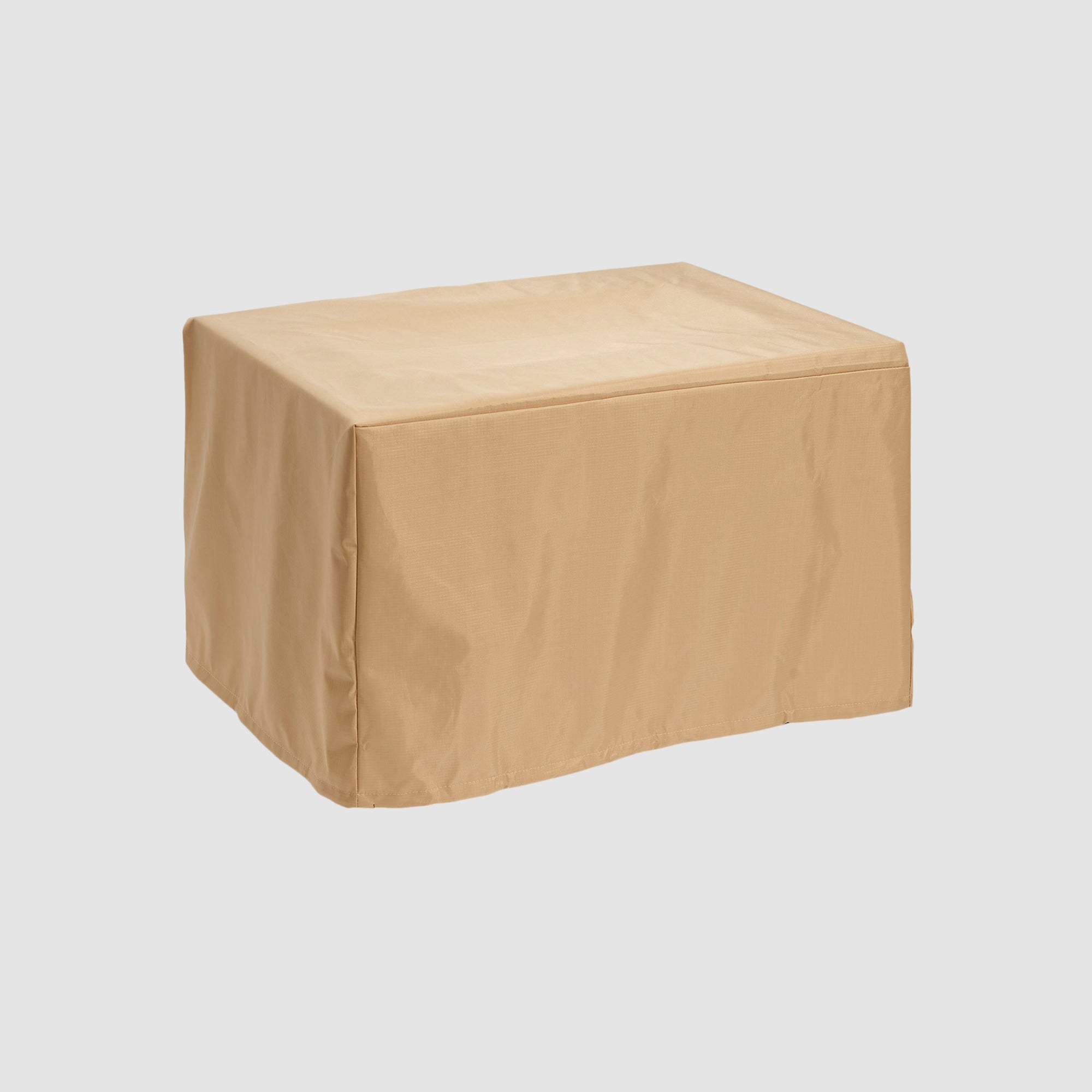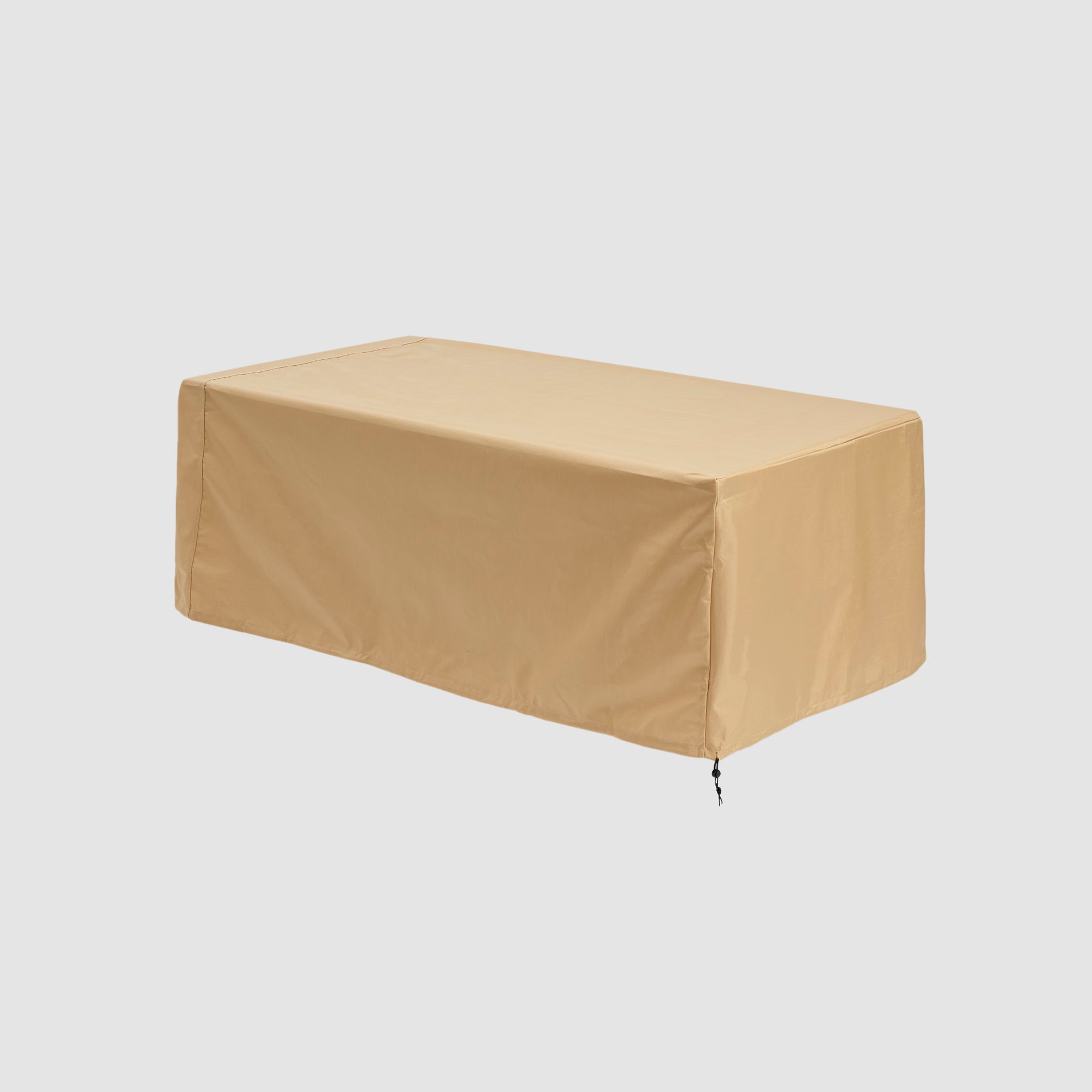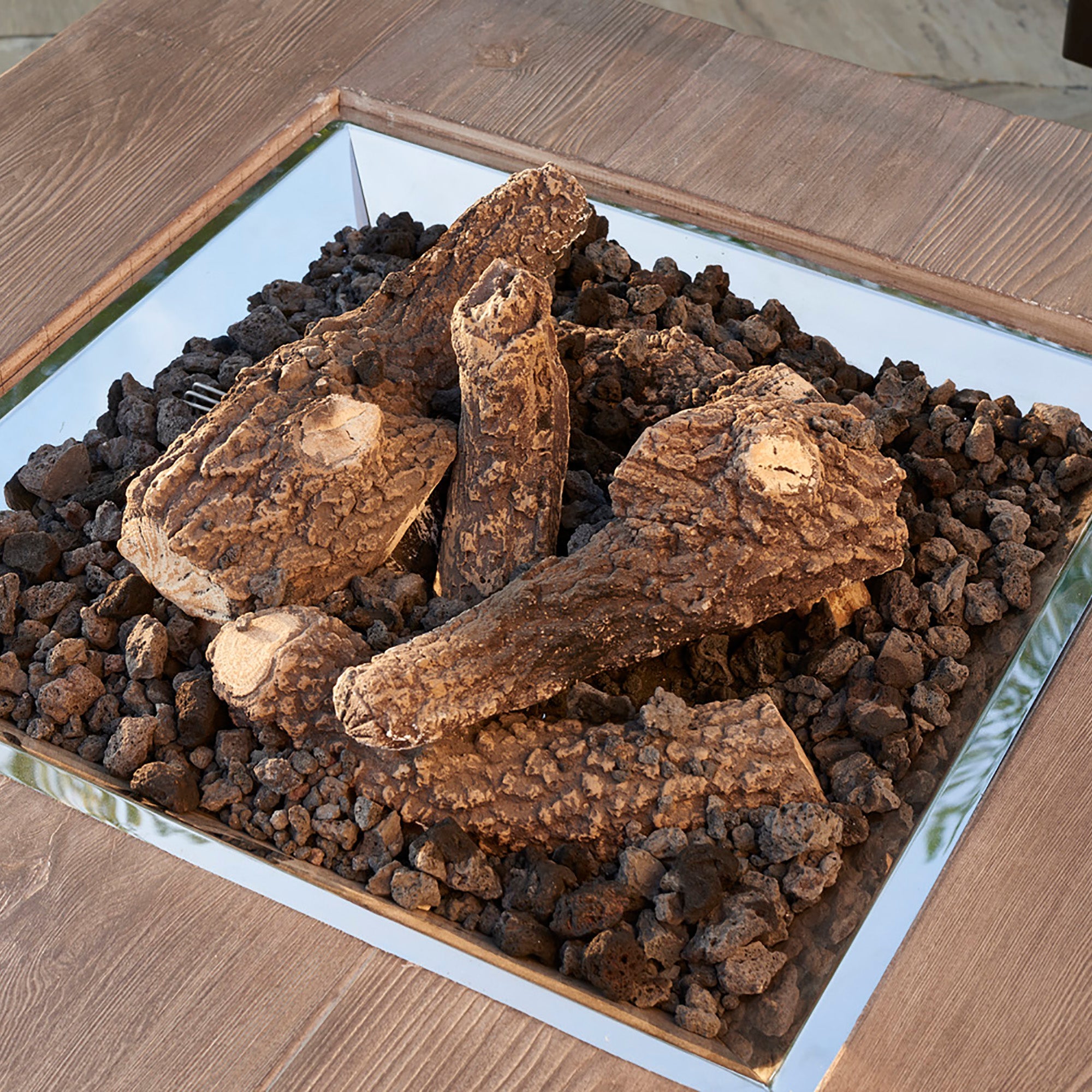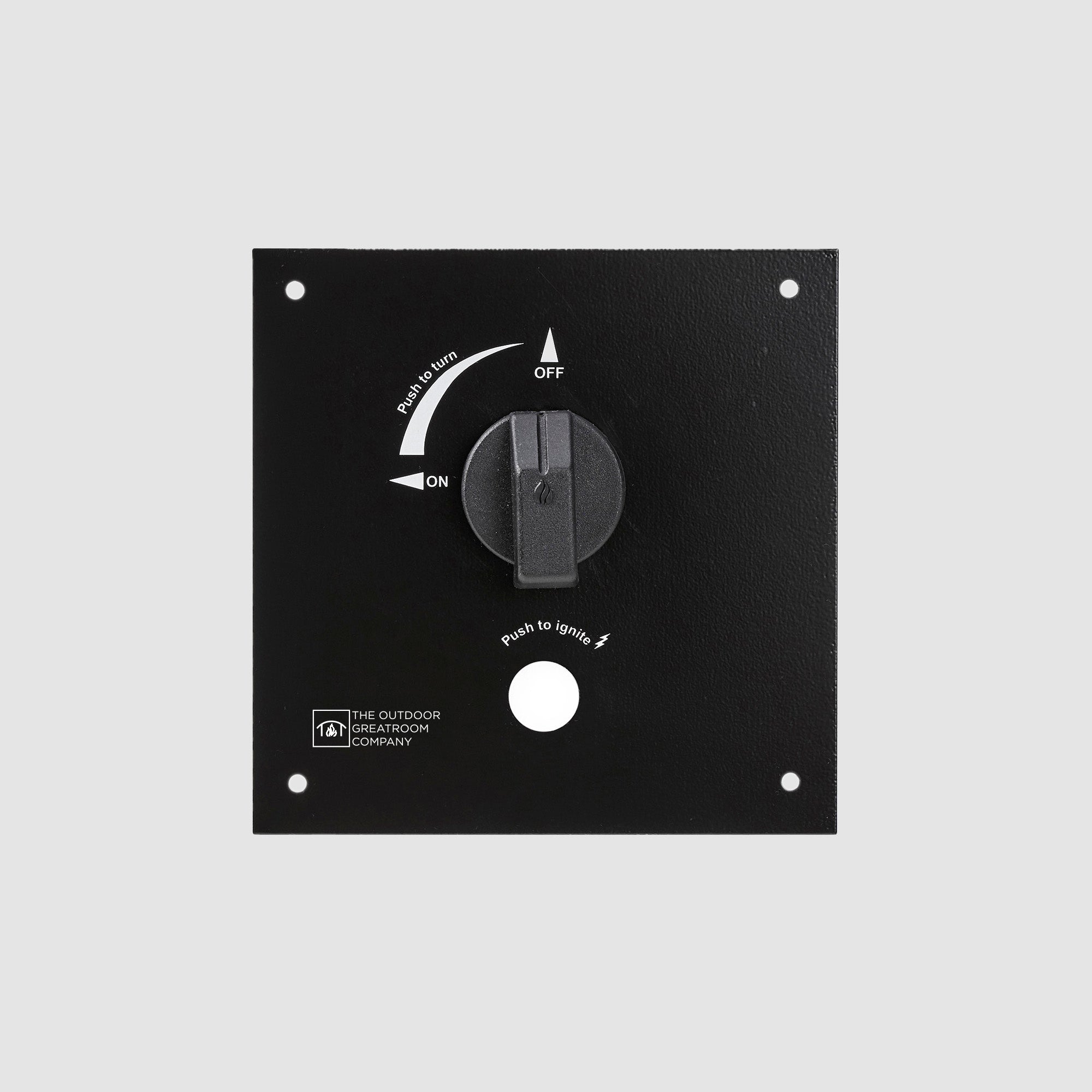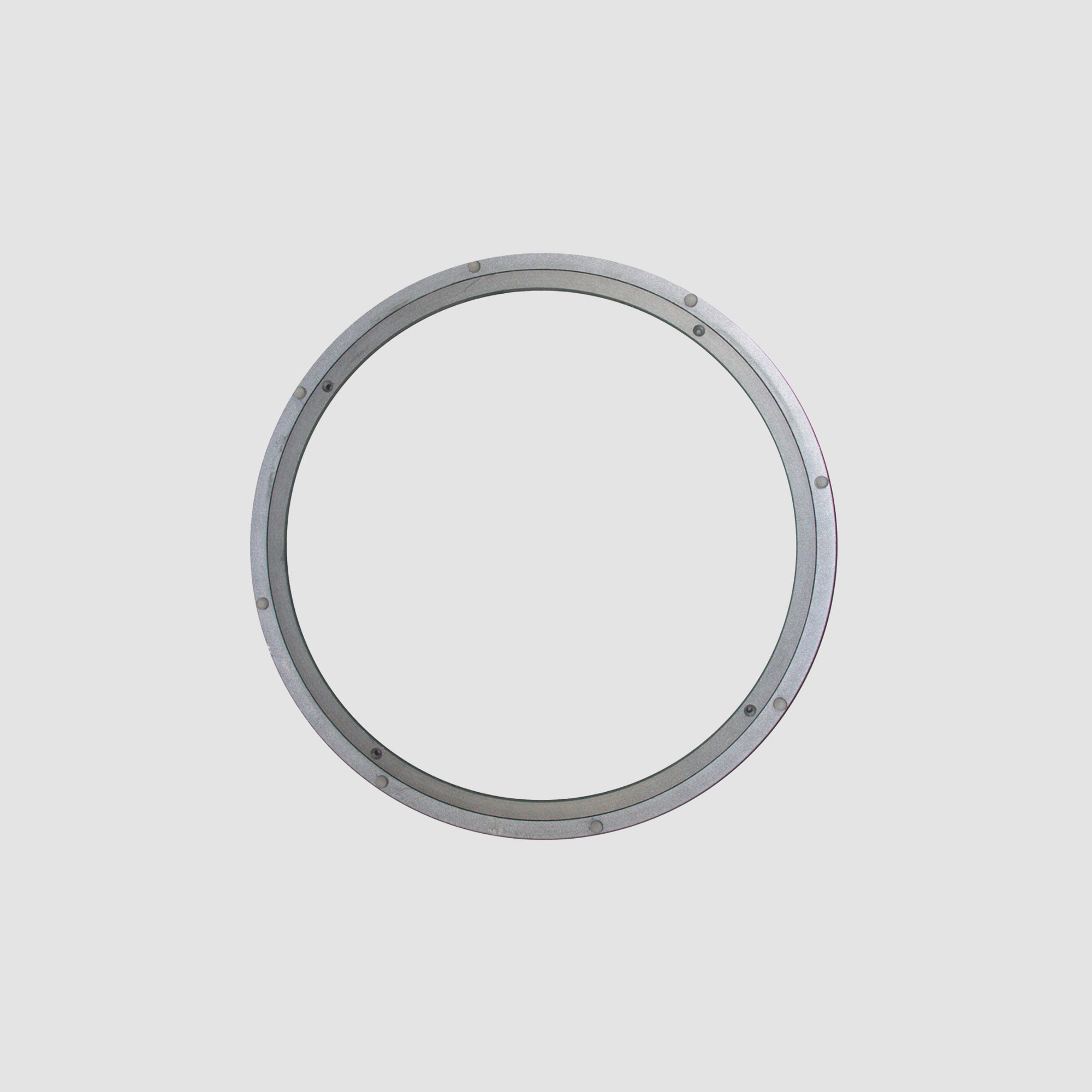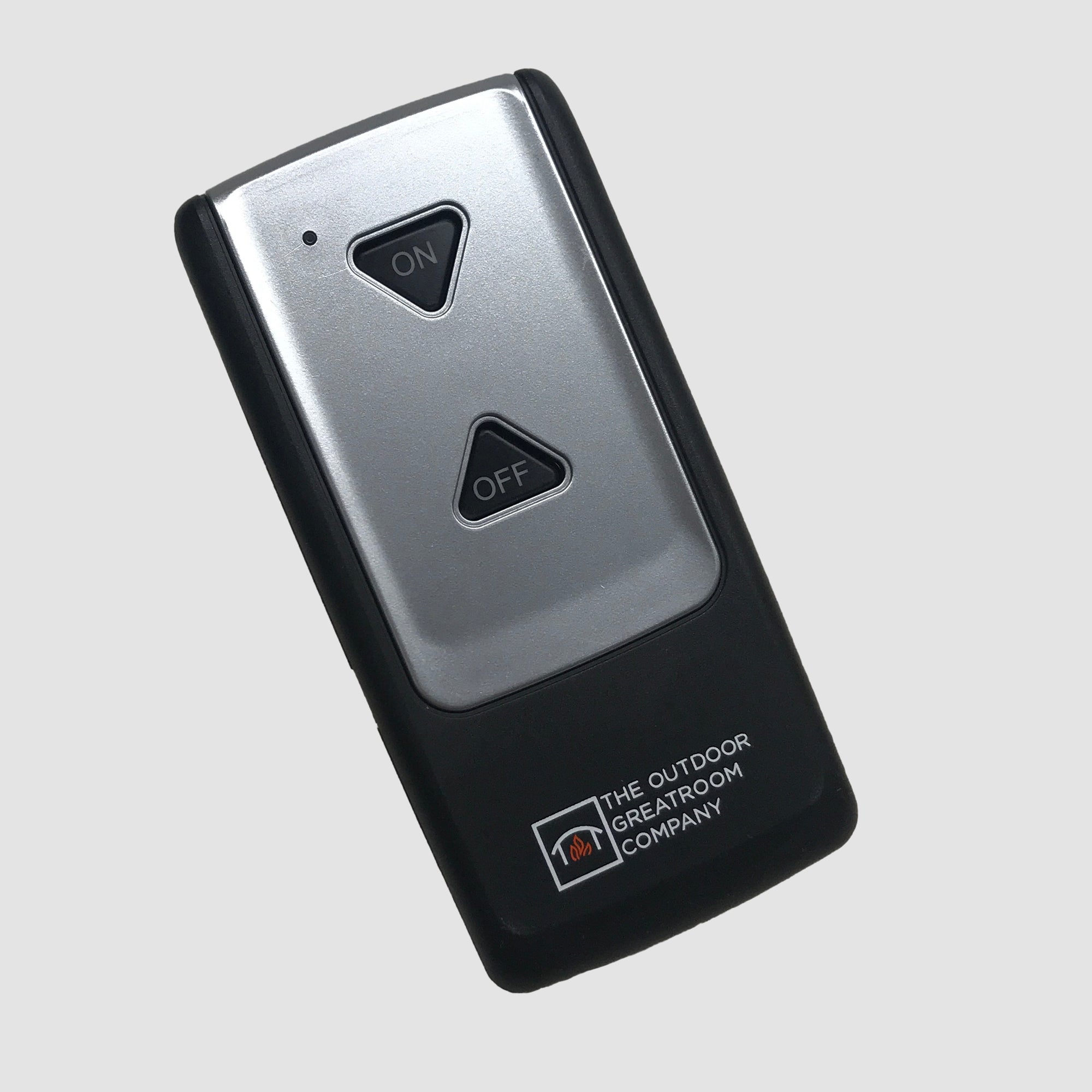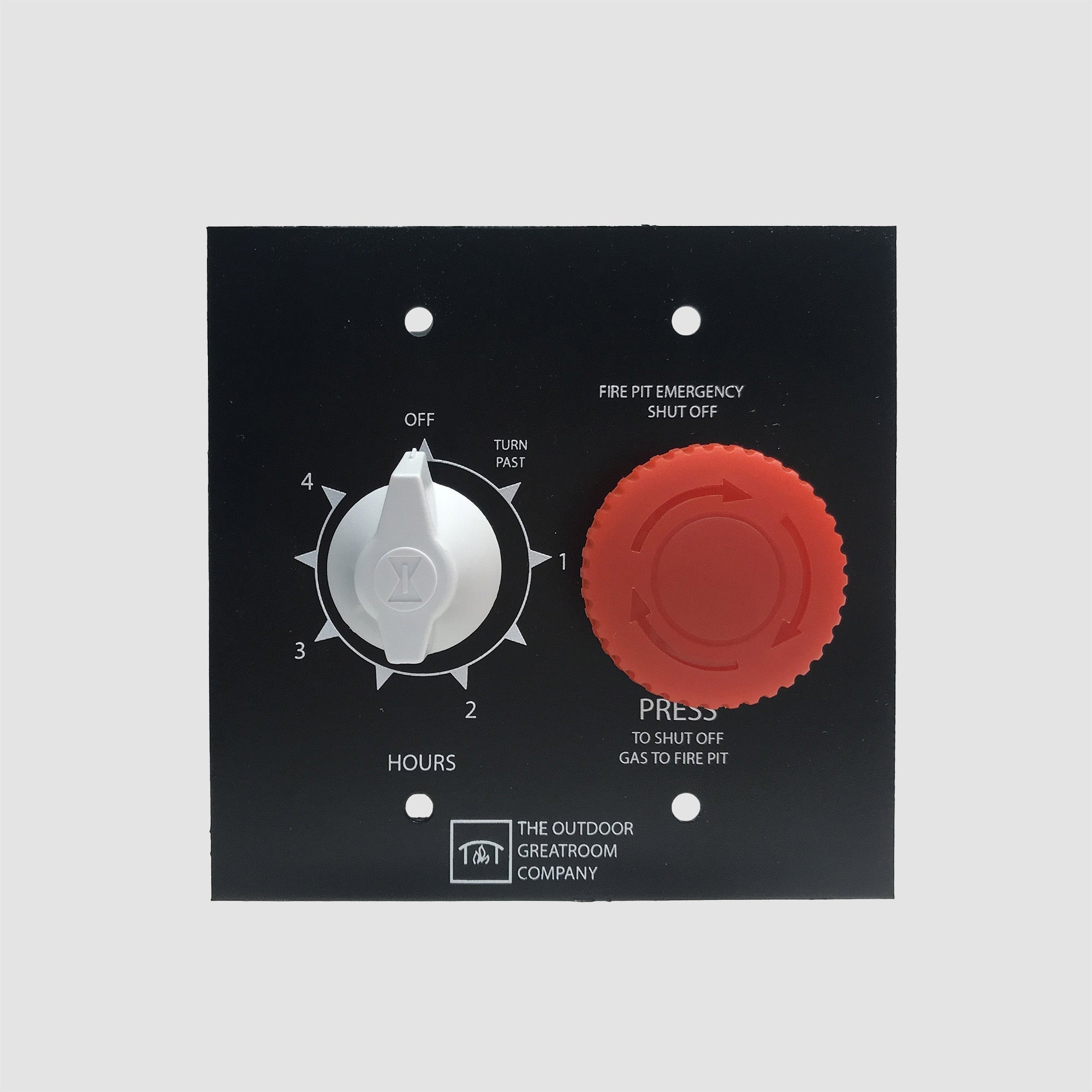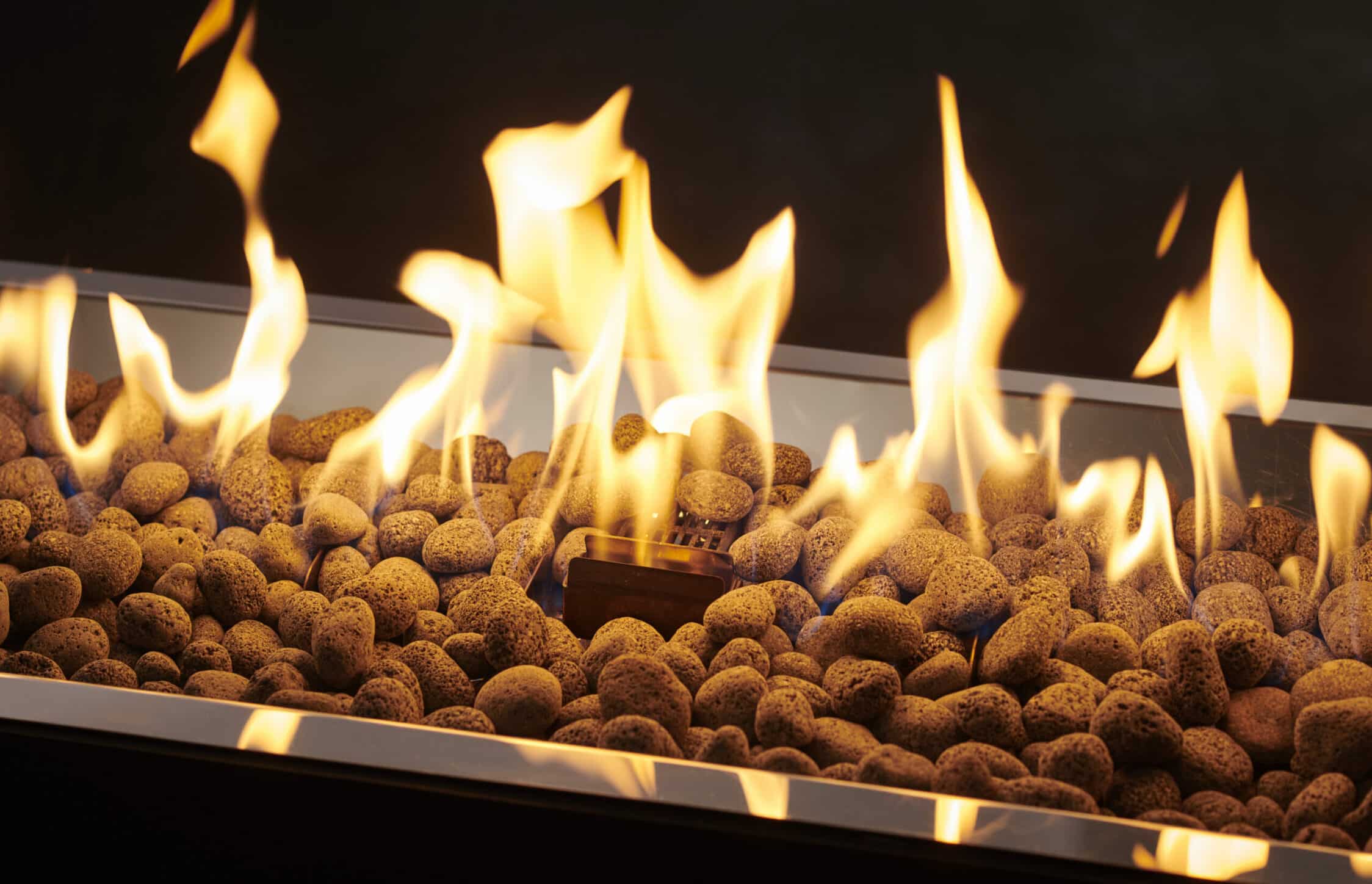Fire pits are a staple in backyards and patios and when deciding on the best fire pit for your outdoor space, it’s crucial to consider all available burning options—liquid propane, natural gas, and wood. Each type has its unique advantages and considerations in terms of safety, convenience, maintenance, and environmental impact. Let's take a look at the differences between each fuel type to help you select the option the best fits your outdoor fire needs.
Liquid Propane Fire Pits
Most liquid propane (LP) firepits operate using a 20 lb propane tank that can be purchased at your local gas station or hardware store. The propane tank connects to the fire pit with a gas line and the fire burns using the fuel from the tank. There are several advantages to choosing an LP gas fire pit.

Product Show: Havenwood Rectangular Gas Fire Pit Table (Concealed Propane Tank Drawer) - HWDG-1224-K
Convenience and Control: LP fire pits are highly convenient, offering quick ignition and easy control with the push of a button. They eliminate the need for constant refueling and managing unpredictable sparks, making them safer for families with children or pets. Additionally, LP fire pits are ideal for areas where wood burning is prohibited.
Performance and Design: Propane fire pits produce a larger, more visible flame compared to natural gas. They also offer great flexibility in design, with options for hidden propane tank storage and allow the use of fire media such as tempered glass and faux wood to increase the visual appeal of the fire itself and the fire pit table.
Maintenance: While LP tanks do need periodic refilling, maintenance is generally straightforward—simply replace the tank and keep the fire pit clean and covered when not in use.
Natural Gas Fire Pits
Natural Gas (NG) fire pits work similarly to LP fire pits. The most notable difference is NG fire pits typically have gas line that runs underground from an external source versus having a nearby tank. NG fire pits have several advantages.

Product Shown: Cove 42" White Round Gas Fire Pit (Coves are often spec'd into patio designs and use natural gas, but are available in both LP and NG)
Long-Term Economy: NG firepits are a more economical option over the long term, particularly if you already have a gas line installed. They provide an unlimited fuel supply, eliminating the need for frequent refueling trips.
Environmental Impact and Flame Quality: Natural gas burns cleaner than propane, though its flame may not be as bright. However, advancements like The Outdoor GreatRoom's Crystal Fire® Plus burner technology have improved flame visibility and heat output.
Installation and Maintenance: Installing a natural gas fire pit requires a certified technician, which can add to the initial cost and complexity. Once installed, however, they offer seamless and continuous operation and often require less maintenance than an LP or wood burning fire pit.
Wood Burning Fire Pits
Wood burning firepits use wood and other flammable materials to create fire and heat. While they do offer a more traditional bonfire feel and aesthetic, they have a more significant impact on the environment.
Traditional Appeal: Wood burning fire pits provide the traditional campfire experience with crackling logs and a smoky aroma. Most all wood burning firepits are also safe to cook meals over.
Health and Environmental Concerns: Wood smoke, while natural, can release harmful chemicals and contribute to air pollution, posing health risks, particularly for individuals with respiratory issues. According to the Minnesota Pollution Control Agency (MPCA), wood smoke contains toxic chemicals that can impact both short- and long-term health.
Maintenance: Wood fire pits require more effort to maintain, including cleaning out ash and creosote buildup. They also pose a higher fire hazard due to unpredictable sparks and the need for constant supervision.
Comparison and Recommendations
Safety: Gas fire pits (both propane and natural gas) are generally safer than wood burning options. They offer contained flames, easy shut-off mechanisms, and minimal fire hazards, making them suitable for family-friendly environments.
Cost: While wood fire pits may have a lower initial cost, gas fire pits provide better long-term value due to their durability and lower maintenance requirements. Natural gas, in particular, is more cost-effective over time compared to propane.
Environmental Impact: Gas fire pits are the greener choice, producing fewer emissions and being better for the environment. They also offer a healthier option for those with allergies or asthma due to their clean-burning nature.
Choosing Your Fuel Type
While personal preference plays a significant role in choosing between wood, propane, and natural gas fire pits, gas fire pits often come out ahead in terms of safety, convenience, and environmental friendliness. Whether opting for the convenience of propane or the long-term savings of natural gas, gas fire pits provide a versatile and stylish addition to any outdoor space.
The Outdoor GreatRoom Company offers more than 40 unique gas fire pits and fire pit tables that are sure to fit any backyard or patio aesthetic. Head over to our website or visit your local dealer to shop OGC fire pits today!
